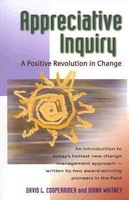Don’t read any further.
Don’t think of a pink elephant.

Are you still reading? And did you visualise a pink elephant?
How come? I clearly asked you not to do so!
The simple answer is that our brain tends to ignore “not”, “don’t” etc. and focus on the content words. You thus tend to do exactly the thing that I am asking you not to do.
If I then say “don’t discriminate”, what happens then? Well, some people believe that you might do just that – not out of any bad intentions, but simply because you get so obsessed with the differences that you are not supposed to discriminate against, that it becomes very difficult to see the similarities and treat people equally. Soon then you start—often unconsciously, and often unintendedly—discriminating others, whether through positive or negative discrimination.
In their book Appreciative Inquiry: A Positive Revolution in Change, David Cooperrider & Diana Whitney tell a story about Rita Simmel, the president of a New York-based consultancy – a business specialised in mediating heavy conflicts between men and women that often include sexual harassment. This company had spent millions of dollars and many years on trying to solve such conflicts for different companies, but had started to doubt whether they were really making any difference.
A concrete case in point had been one of their current clients who they had worked with for years, but according to all measures things were only getting worse: there had been numerous complaints, law suits, and evaluations showing that people were getting more and more insecure. After training sessions and workshops on the issue, many participants said that they felt more insecure about how to communicate with the opposite sex, felt increased distance and decreased confidence. Furthermore, no women were promoted – and so Rita Simmel wanted to know how she could use Appreciative Inquiry on this conflict.
Appreciative Inquiry is about the coevolutionary search for the best in people, their organizations, and the relevant world around them. In its broadest focus, it involves systematic discovery of what gives “life” to a living system when it is most alive, most effective, and most constructively capable in economic, ecological, and human terms. AI involves, in a central way, the art and practice of asking questions that strengthen a system’s capacity to apprehend, anticipate, and heighten positive potential. (Source)
In other words: appreciative inquiry is a method where you focus on best experiences and on what you really want instead of the problems and the things you don’t want, as is too often the case.
Cooperrider asked Rita what she really wanted to achieve by the intervention in this company. Rita said that they of course wanted to diminish the cases of discrimination against woman (read: don’t discriminate / don’t think of the pink elephant). Cooperrider asked if that was really all she wanted to achieve. She then got silent and thought for a long while and then said that what she really wanted was to see a completely new organisation with high quality work across the sexual boundaries.
Cooperrider thought that this was a great idea, and asked what would happen if all members of the organisations were invited to nominate themselves in pairs as candidates to share their stories about how to create and maintain high quality work across sexes?

Photo by Sarah Macmillan
Rita accepted Cooperriders proposal and was soon surprised that in this very same company where they had for so long time tried to fight discrimination, hundreds of pairs now nominated themselves. The project kept growing: a group was trained in interviewing colleagues about their best experiences with cross-sex cooperation. They found lots of stories on mutual confidence, constructive leadership and conflict management and good ways to deal with stereotypes about each other. These interviews were used for inspiration when defining a vision for the organisation and designing policies and practices accordingly. Within just a few years, this company won a price for the “best workplace for women”.

Now imagine what would happen, if we as youth workers stopped focusing on creating awareness on cultural differences and prejudices and stopped repeating: “don’t discriminate ethnic minorities.” Imagine what would happen if the first we did was to ask our participants: tell me the story of the time where you have experienced the best cooperation ever with ethnic minorities in your work, what happened? What did you do? What was your contribution? Imagine how much information this would give us about how to integrate and include. We would not just get information about and become aware of cultural differences, and about problems of integration or examples of discrimination. However, we would get really cool and useful information about how to include ethnic minorities into our projects and organisations. And imagine what would then happen if we found ways to enlarge and repeat these best practices and to do much more inclusion.
Just imagine…
Imagine what would happen if we started the project development phase during training with asking the participants to tell us the story about when they have themselves felt most included and empowered by being involved in a project. And we then asked them to use this information, (enlarge it and repeat it) to plan how to involve and include ethnic minorities into projects and organisations. I believe that none of such stories would be about “how someone made a project for me”, but rather about “how I was involved in the decision-making process from the very beginning, how I was listened to and taken into account” We might then be so lucky to get youth projects where both minority and majority have been truly involved in all phases from defining, planning, implementing and participating, rather than just be seen as the final recipients of the project.
be amazed!
When being presented with such a method, you might think, oh very nice, but isn’t it too superficial when you cannot deal with the things which went wrong… Or you might think very nice but it wouldn’t work in my case because we really have big problems. And yes you are right; this might be the outcome of focusing on the best, if you do not facilitate the process carefully. On the other hand, if you do use the method of appreciative inquiry to its full potential, you will be amazed with the power it has to dissolve problems and turn the focus towards creativity, ideas and energy. And isn’t that exactly what we need for dealing with the challenges of multicultural societies?
This is the sixth and last article of our critical series on intercultural learning by Lene Mogensen from In Dialogue.{{1}} Start with The Derdians if you have missed the beginning.
[[1]]It was originally written in 2006, and has lost none of its potency.[[1]]

Comments
2 responses to “Differences — or a common vision?”
I’d like to make a couple of comments to the recently published articles from your series …
I do understand and even appreciate the point about starting from a positive starting point when trying to address issues and attendant problems commonly addressed by intercultural learning that is expressed by this article, but I am not sure that I wholeheartedly agree with the conclusion, especially given the example from the business sector, which are more often than not are concerned with two things – bad PR and the productivity downer that bad social relations in the company can lead to – rather than in the “well being” of the work force. As we have seen from recent crises, business continues to have little or no social conscience.
The existence of many good practices and positive examples, and their worthiness notwithstanding, does not take away from the fact that certain kinds of persistently discriminatory practice are simply unacceptable and need to be confronted as such – politicised even. In one of your previous articles, you came down very heavily on the side of the “reality check” when trying to work constructively with cultural differences, and I would advocate for such in this kind of situation as well. The positive reality lives hand in hand with the negative one, and there must be some space for addressing it. Otherwise, I think we will inevitably end up caught in the trap of relativism.
This does not mean that appreciative enquiry is not useful or valuable, but for me it is questionable as to whether it can replace the hard slog of negotiating a truly common vision of the way we may want to live and work together. I am rather pessimistic as to the will that actually exists for that hard slog. Is the common vision of a society inclusive, empowering and considerate of all really something that power holders and the ordinary joe really wants? I am frankly not convinced. Appreciating that we have a lot of knowledge as to how to live and work together could certainly a starting point, but like awareness raising, it is not enough for mobilising change. And it is certainly only enough for mobilising those who are already convinced that change is necessary. What about all the others who are quite happy with the status quo and who hark back to even darker times. Those guys have been gaining a lot of ground latetly. And they’re just not interested in appreciating anything much, if you ask me.
At this point, I’d like to come back to politics. In another article, you yourself warned of ignoring the real and substantive root causes of problems commonly deemed cultural. Alana Lentin, Gavan Titley and Gary Younge all make a similar point about the culturalisation of problems, which frankly have little or nothing to do with culture. It is of course very convenient for power holders to do this. It clearly creates a scapegoat to blame for social and political problems political incumbents have either failed to address or worse still have created themselves.
My question after re-reading all the articles, is what do you think intercultural learning can do to address this problem? You rightly point out that the methods we use are often indadequate for this, and you propose appreciative enquiry as an alternative. But, from a conceptual point of view – in terms of the fundamental principles – what needs to be rethought in the conception of intercultural learning to address the overculturalisation of issues such as terorrism or FGM, which might also be seen as fundamentally political issues, on par with respect for civic or political rights in certain kinds of regime. What do young people need to learn through intercultural learning in order to be able to take all the complexity of such developments apart, evaluate it for themselves, form opinions, develop strategies, and form alliances.
My feeling is that justice, as an idea and a value, has to become a stronger dimension of intercultural learning work again. It was a key proposition of intercultural learning at one time, but then it became unfashionable to keep pointing out and confronting problems, so justice somehow gave way to woolly ideas about dialogue, respect and tolerance. But, is it just that some should be tolerated and others can just be? Is it just that some can take so much for granted and others constantly have to put themselves into question? In my opinion, intercultural learning should help us learn how to put ourselves and reality into question. We should be learning about tolerance of ambiguity for that purpose, and not as commonly practiced, for the purpose of making us feel more comfortable with cultural differences which are vastly overblown. Questioning oneself, reality and one’s position, and the identification of injustice that can accompany it, is the architypal political act. Is this not what intercultural learning should be all about?
I’m curious to hear your opinions ….
Lately I also got familiar with the appreciative inquiry and even used its approach/steps with some groups. My first impressions are that it is rather challenging for people to “think positive” but I share somehow the doubt if “think positive” is not eliminating “think critical”.
Few days ago I found an interesting article with some insights on both, the challenge and doubt. Suzanne Grant and Maria Humphries in their article “Critical evaluation of appreciative inquiry: Bridging an apparent paradox” (available at http://arj.sagepub.com/cgi/content/abstract/4/4/401) shares their thoughts of bridging the appreciative inquiry and critical theory.
They argue that by bridging two, seems opposite approaches, the outcomes are much more fruitful and enjoyable. In the article they call it “a paradox in action”. For me it gives some directions on how appreciative inquiry could include critical reflections leading towards transformative change.
Now I continue reading PhD theses of Suzanne Grant on which the article is grounded (available at http://researchcommons.waikato.ac.nz/handle/10289/2583). So far it is exciting and I am willing to apply some discoveries in my educational practice.